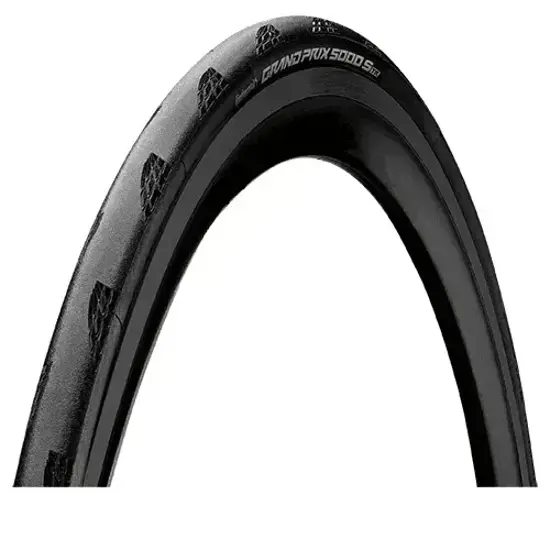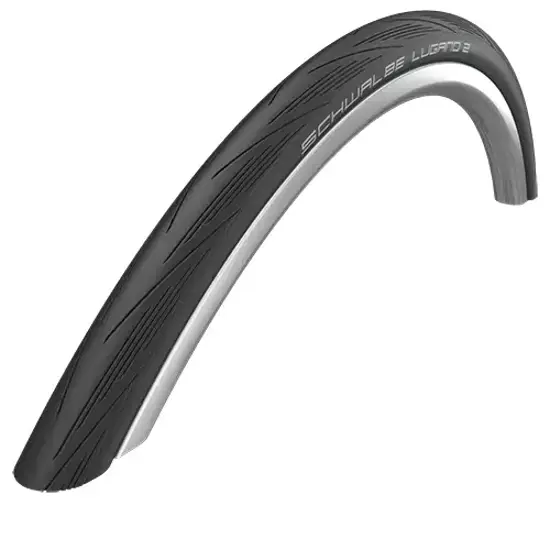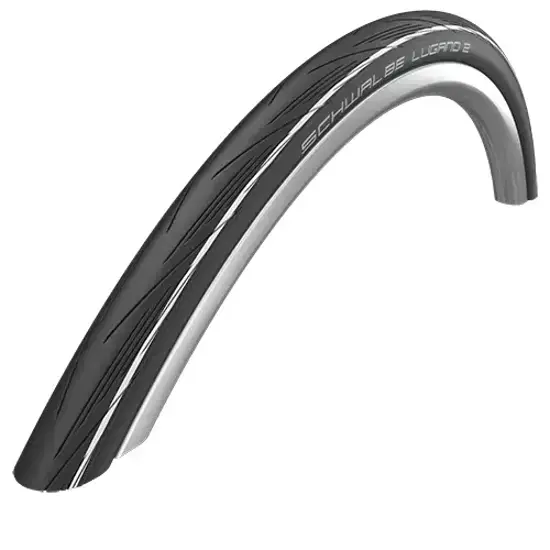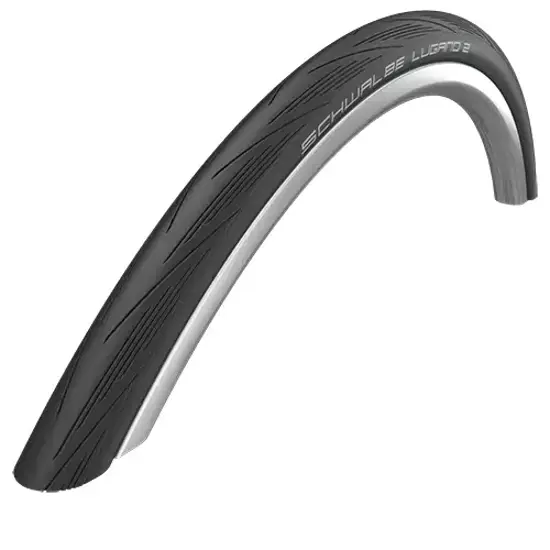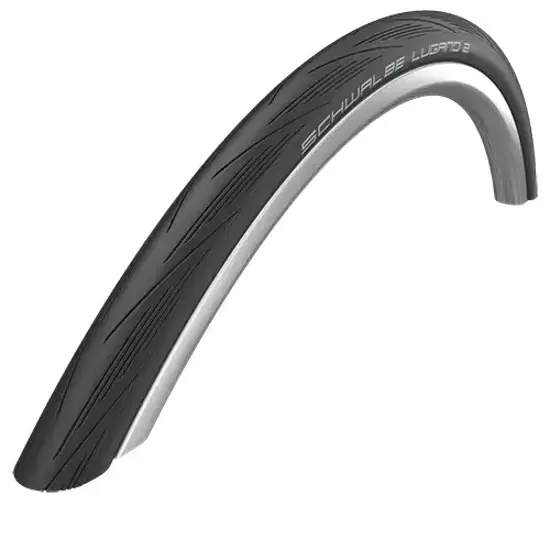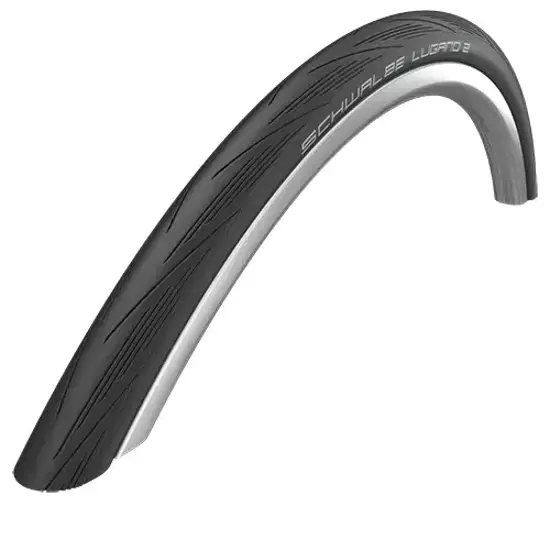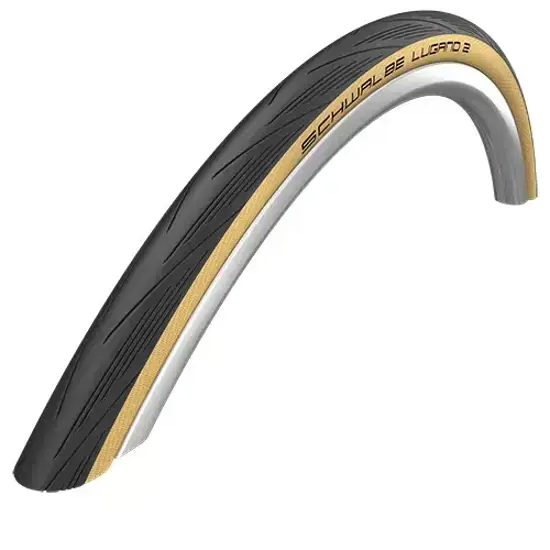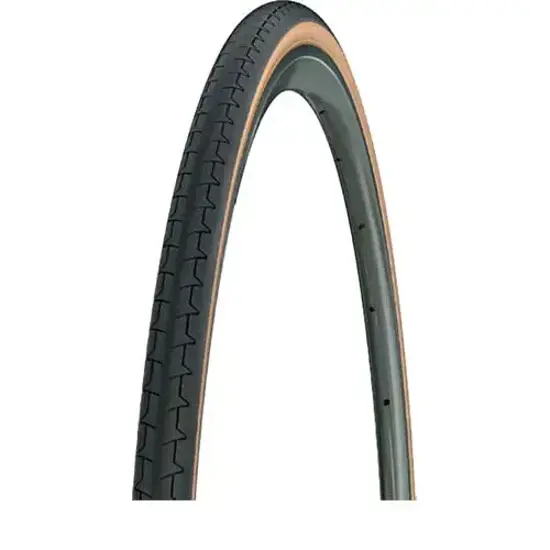Road bike tyres
If you would like to expand your result list to include all products, click on the button.
-
Recommendation
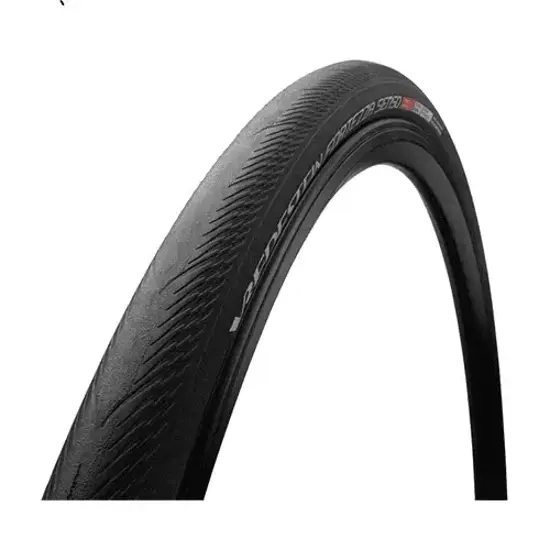
![Vredestein]() Bicycle tyresVredestein28-622 Fortezza Senso Xtreme Weather 700x28C28-62228 inchFolding tyre52.63 €
Bicycle tyresVredestein28-622 Fortezza Senso Xtreme Weather 700x28C28-62228 inchFolding tyre52.63 € -
Recommendation
![Continental 30 622 Grand Prix 5000 S TR Vectran Breaker LazerGrip ACT BlackChili Compound TPI 2 220 Black Transparent faltbar 15351547]()
![Continental]() Bicycle tyresContinental30-622, Grand Prix 5000 S TR, Black/Transparent Folding tyre30-62228 inchFolding tyre70.87 €
Bicycle tyresContinental30-622, Grand Prix 5000 S TR, Black/Transparent Folding tyre30-62228 inchFolding tyre70.87 € -
![Schwalbe 23 622 LUGANO II 28x090 Drahtreifen K GUARD SILICA Schwarz 15364643]()
![Schwalbe]() Bicycle tyresSchwalbe23-622 LUGANO II 28x0.90 Drahtreifen K-GUARD SILICA Schwarz23-62228 inchFolding tyre23.42 €
Bicycle tyresSchwalbe23-622 LUGANO II 28x0.90 Drahtreifen K-GUARD SILICA Schwarz23-62228 inchFolding tyre23.42 € -
![Schwalbe 25 622 LUGANO II 28x100 Drahtreifen K GUARD SILICA Schwarz 15326260]()
![Schwalbe]() Bicycle tyresSchwalbe25-622, LUGANO II K-Guard, Active Line, Silica, EPI 50, Black25-62228 inchFolding tyre23.42 €
Bicycle tyresSchwalbe25-622, LUGANO II K-Guard, Active Line, Silica, EPI 50, Black25-62228 inchFolding tyre23.42 € -
![Schwalbe 25 622 LUGANO II 28x100 Drahtreifen K GUARD SILICA Schwarz Weiss 15326263]()
![Schwalbe]() Bicycle tyresSchwalbe25-622, LUGANO II K-Guard, Active Line, Silica, EPI 50, White Stripes25-62228 inchFolding tyre23.60 €
Bicycle tyresSchwalbe25-622, LUGANO II K-Guard, Active Line, Silica, EPI 50, White Stripes25-62228 inchFolding tyre23.60 € -
![Schwalbe 25 622 LUGANO II 28x100 Drahtreifen K GUARD SILICA Schwarz Blau 15326262]()
![Schwalbe]() Bicycle tyresSchwalbe25-622, LUGANO II K-Guard, Active Line, Silica, EPI 50, Blue Stripes25-62228 inchFolding tyre23.60 €
Bicycle tyresSchwalbe25-622, LUGANO II K-Guard, Active Line, Silica, EPI 50, Blue Stripes25-62228 inchFolding tyre23.60 € -
![Schwalbe 28 622 LUGANO II 28x110 Drahtreifen K GUARD SILICA Schwarz 15326265]()
![Schwalbe]() Bicycle tyresSchwalbe28-622, LUGANO II K-Guard, Active Line, Active Line, Silica, EPI 50, Black28-62228 inchFolding tyre23.84 €
Bicycle tyresSchwalbe28-622, LUGANO II K-Guard, Active Line, Active Line, Silica, EPI 50, Black28-62228 inchFolding tyre23.84 € -
![Schwalbe 32 622 LUGANO II 28x125 Drahtreifen K GUARD SILICA Schwarz 15326266]()
![Schwalbe]() Bicycle tyresSchwalbe32-622, LUGANO II K-Guard, Active Line, Active Line, Silica, EPI 50, Black32-62228 inchFolding tyre23.99 €
Bicycle tyresSchwalbe32-622, LUGANO II K-Guard, Active Line, Active Line, Silica, EPI 50, Black32-62228 inchFolding tyre23.99 € -
![Schwalbe 25 622 LUGANO II 28x100 Drahtreifen K GUARD SILICA Schwarz Braun 15326264]()
![Schwalbe]() Bicycle tyresSchwalbe25-622, LUGANO II K-Guard, Active Line, Silica, EPI 50, Classic-Skin25-62228 inchFolding tyre24.50 €
Bicycle tyresSchwalbe25-622, LUGANO II K-Guard, Active Line, Silica, EPI 50, Classic-Skin25-62228 inchFolding tyre24.50 € -
![MICHELIN 28 622 DYNAMIC CLASSIC ACCESS LINE 700x28C TPI30 Transparent Black Drahtreifen 15361732]()
![MICHELIN]() Bicycle tyresMICHELIN28-622, DYNAMIC CLASSIC ACCESS LINE 700x28C,TPI30 Transparent/Black, Drahtreifen28-62228 inchFolding tyre25.72 €
Bicycle tyresMICHELIN28-622, DYNAMIC CLASSIC ACCESS LINE 700x28C,TPI30 Transparent/Black, Drahtreifen28-62228 inchFolding tyre25.72 € -
![MICHELIN 25 622 DYNAMIC CLASSIC ACCESS LINE 700x25C TPI30 Transparent Black Drahtreifen 15361982]()
![MICHELIN]() Bicycle tyresMICHELIN25-622, DYNAMIC CLASSIC ACCESS LINE 700x25C,TPI30 Transparent/Black, Drahtreifen25-62228 inchFolding tyre25.72 €
Bicycle tyresMICHELIN25-622, DYNAMIC CLASSIC ACCESS LINE 700x25C,TPI30 Transparent/Black, Drahtreifen25-62228 inchFolding tyre25.72 € -
![MICHELIN 23 622 DYNAMIC CLASSIC ACCESS LINE 700x23C TPI30 Transparent Black Drahtreifen 15362118]()
![MICHELIN]() Bicycle tyresMICHELIN23-622, DYNAMIC CLASSIC ACCESS LINE 700x23C,TPI30 Transparent/Black, Drahtreifen23-62228 inchFolding tyre25.72 €
Bicycle tyresMICHELIN23-622, DYNAMIC CLASSIC ACCESS LINE 700x23C,TPI30 Transparent/Black, Drahtreifen23-62228 inchFolding tyre25.72 €
Racing bikes place specific requirements on the tyres, as factors such as the tread have a significant influence on safety and performance. It's fairly logical: racing bike tyres are required to carry the bike along the road at lightning speed, without compromising on safety. Of course, when making a purchase, a distinction must be made between amateur and high-performance sport. However, racing tyres are generally considered to be sporting equipment that is not intended for everyday use.
Construction, material, and quality thus play a major role. For ambitious racers, factors such as the roll resistance and aerodynamics are crucial in determining performance levels. Puncture protection should also be as reliable as possible, as accidents at incredibly high speeds can have serious consequences for racers.
Depending on the intended application, tyres for racing bikes come in 26 or 28-inch versions. The tyre width varies between 23 and 25 millimetres, and definitely no larger than 28 millimetres. This has an impact on the contact surface. The larger the contact surface, the more of the tyre will be in contact with the ground when cornering. The particularly narrow tyres are used primarily by professionals. Those who like riding fast, but do not consider themselves to be high-performance athletes, would generally be well advised to go for a tyre width of between 25 and 28 millimetres.
Which tyre variant is suitable for racing bikes?
Whereas everyday cyclists generally use clincher tyres, these are not used in competitive racing. Racing bike tyres must, first and foremost, be light, and the roll resistance as low as possible – properties that cannot be attributed to clincher tyres. In addition, clincher tyres cannot tolerate the air pressure required for competitive racing, and thus present a safety risk. Racers therefore use tubular tyres. With this variant, the construction consisting of tyre and tube forms an enclosed system, which is then held together with a special adhesive.
Somewhat newer, and originally inspired by car tyres: tubeless tyres. As the name suggests, these are bicycle tyres without tubes. These are pulled onto the rim, with no need for an additional tube. Tubeless tyres can certainly be used and are increasing in popularity, but you should bear the high tyre pressure in mind. Another disadvantage: not all systems can necessarily be fitted on to every rim - the rims must be "tubeless-ready".
Whether a racing bike is best ridden on soft or hard tyres will depend on the intended purpose, the rider, and the road surface or terrain. For training, soft tyres are recommended, as these offer a high level of ground contact, and thus higher grip. Ultimately, this means enhanced safety, even in adverse weather conditions or in sharp bends. In competitions, hard tyres are used as this reduces roll resistance and increases ride speed.
How important is tread when it comes to racing bike tyres?
When it comes to racing tyres, we think, first and foremost, of particularly narrow and smooth tyres, whereas the trend in competitive cycling is now shifting towards wider tyres. However, high-performance tyres generally have no notable tread or even lugs. In any case, the tyre tread is essentially a visual factor, with the respective rubber compound the most important factor in determining grip. Material properties are therefore more important than the tread.
Awkward fitting: not for everyday use
The fitting of tubular tyres is not something that can be slipped in between other tasks. On account of the glueing, replacement requires some effort, and patching requires the seam to be unstitched - a job for the professional. For everyday use, tubular tyres are therefore only recommended if you calculate in this expense. Often the tyres have to been completely replaced, which must also be taken into consideration as a cost factor. This is not such a concern in professional use. Tubular tyres are used, for example, in the Tour de France, and impress in high-performance sport on account of their low weight, reliable puncture protection, and good ride characteristics. Tubular tyres are perfectly suited as racing bike tyres.
Particularly popular racing bike tyres:
- Schwalbe Pro One
- Contintental Grand Prix 4000 S II
- Continental Sprinter/4000/Competition

Source: ArjenV (Pixabay)
 Austria
Austria

